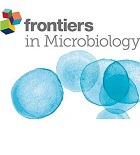Biocompatibility in ternary fermentations with lachancea thermotolerans, other Non-Saccharomyces and Saccharomyces cerevisiae to control pH and improve the sensory profile of wines from warm areas
Dublin Core
Título
Biocompatibility in ternary fermentations with lachancea thermotolerans, other Non-Saccharomyces and Saccharomyces cerevisiae to control pH and improve the sensory profile of wines from warm areas
Tema
LEVADURAS
FERMENTACION
HANSENIASPORA VINEAE
VINOS
ACIDEZ
FRESCURA
BIBLIOGRAFIA NACIONAL QUIMICA
2021
PERFIL SENSORIAL
BIOCOMPATIBILIDAD
Abstract
Global warming is causing serious problems, especially, in warm regions, where musts with excess sugars and high pH produce wines with decreased freshness and unstable evolution. This study aimed to determine biocompatibility between yeast species, the capacity for microbiological acidification, and the aromatic profile produced in ternary fermentations in which Lachancea thermotolerans has been co-inoculated with Hanseniaspora vineae, Torulaspora delbrueckii, or Metschnikowia pulcherrima, and the fermentation process is subsequently completed with sequential inoculation of Saccharomyces cerevisiae. For this purpose, different cell culture media and instruments were used such as infrared spectroscopy, enzymatic autoanalyzer, chromatograph coupled with a flame ionization detector, spectrophotometric analysis, among others. The behavior of these yeasts was evaluated alone and in co-inoculation, always finishing the fermentation with sequential inoculation of S. cerevisiae, at a stable temperature of 16°C and with a low level of sulfites (25 mg/L) in white must. Significant results were obtained in terms of biocompatibility using population counts (CFU/ml) in differential plating media that permitted monitoring. Quantification of the five species was studied. Concerning acidification by L. thermotolerans in co-inoculations, we showed some metabolic interactions, such as the inhibition of acidification when H. vineae/L. thermotolerans were used, generating just over 0.13 g/L of lactic acid and, conversely, a synergistic effect when M. pulcherrima/L. thermotolerans were used, achieving 3.2 g/L of lactic acid and a reduction in pH of up to 0.33. A diminution in alcohol content higher than 0.6% v/v was observed in co-inoculation with the L. thermotolerans/M. pulcherrima yeasts, with total sugar consumption and very slow completion of fermentation in the inoculations with H. vineae and T. delbrueckii. The aromatic composition of the wines obtained was analyzed and a sensory evaluation conducted, and it was found that both L. thermotolerans and co-inoculations retained more aromatic esters over time and had a lower evolution toward the yellow tones typical of oxidation and that the best sensory evaluation was that of the Lt + Mp co-inoculation. Lachancea thermotolerans and co-inoculations produced wines with low levels of volatile acidity (<0.4 g/L). This work shows that good consortia strategies with binary and ternary fermentations of yeast strains can be a powerful bio-tool for producing more complex wines.
Autor
Vaquero, Cristian
Loira, Iris
Heras, José María
González, Carmen
Morata, Antonio
Fuente
Frontiers in Microbiology, v. 12, 2021. -- e656262
Editor
Frontiers Media
Fecha
2021
Derechos
Información sobre Derechos de Autor
(Por favor lea este aviso antes de abrir los documentos u objetos)
La legislación uruguaya protege el derechode autor sobre toda creación literaria, científica o artística, tanto en lo que tiene que ver con sus derechos morales, como en lo referente a los derechos patrimoniales con sujeción a lo establecido por el derecho común y las siguientes leyes (LEY 9.739 DE 17 DE DICIEMBRE DE 1937 SOBRE PROPIEDAD LITERARIA Y ARTISTICA CON LAS MODIFICACIONES INTRODUCIDAS POR LA LEY DE DERECHO DE AUTOR Y DERECHOS CONEXOS No. 17.616 DE 10 DE ENERO DE 2003, LEY 17.805 DE 26 DE AGOSTO DE 2004, LEY 18.046 DE 24 DE OCTUBRE DE 2006 LEY 18.046 DE 24 DE OCTUBRE DE 2006)
ADVERTENCIA: La consulta de este documento queda condicionada a la aceptación de las siguientes condiciones de uso: Este documento es únicamente para usos privados enmarcados en actividades de investigación y docencia. No se autoriza su reproducción con fines de lucro. Esta reserva de derechos afecta tanto los datos del documento como a sus contenidos. En la utilización o cita de partes debe indicarse el nombre de la persona autora.Formato
PDF
Idioma
Inglés
Tipo
Artículo
Identificador
10.3389/fmicb.2021.656262
Document Item Type Metadata
Original Format
PDF
- Fecha de agregación
- November 4, 2021
- Colección
- Bibliografía Nacional Química
- Tipo de Elemento
- Document
- Etiquetas
- Acidez, Biocompatibilidad, Fermentación, fresura, Hanseniaspora Vineae, Levaduras, Perfil sensorial, Vinos
- Citación
- Vaquero, Cristian, “Biocompatibility in ternary fermentations with lachancea thermotolerans, other Non-Saccharomyces and Saccharomyces cerevisiae to control pH and improve the sensory profile of wines from warm areas,” RIQUIM - Repositorio Institucional de la Facultad de Química - UdelaR, accessed August 25, 2024, https://riquim.fq.edu.uy/items/show/6428.
- Archivos

